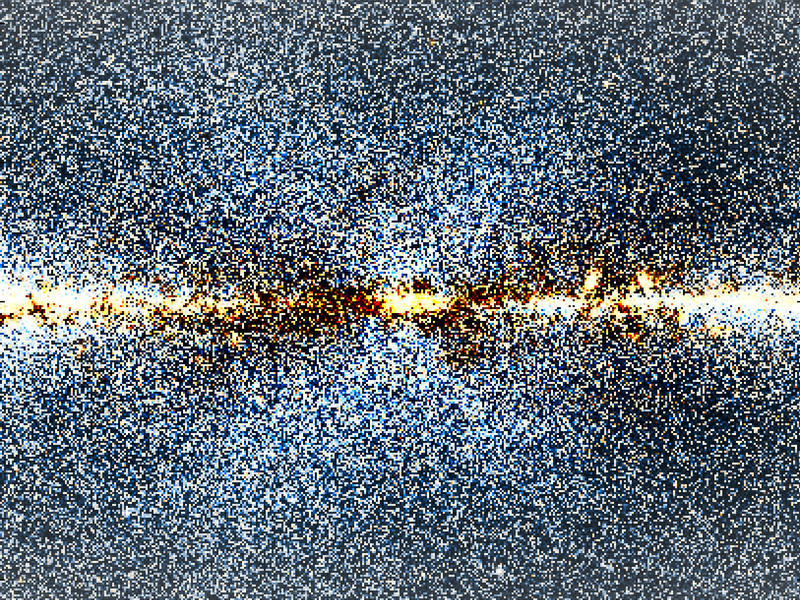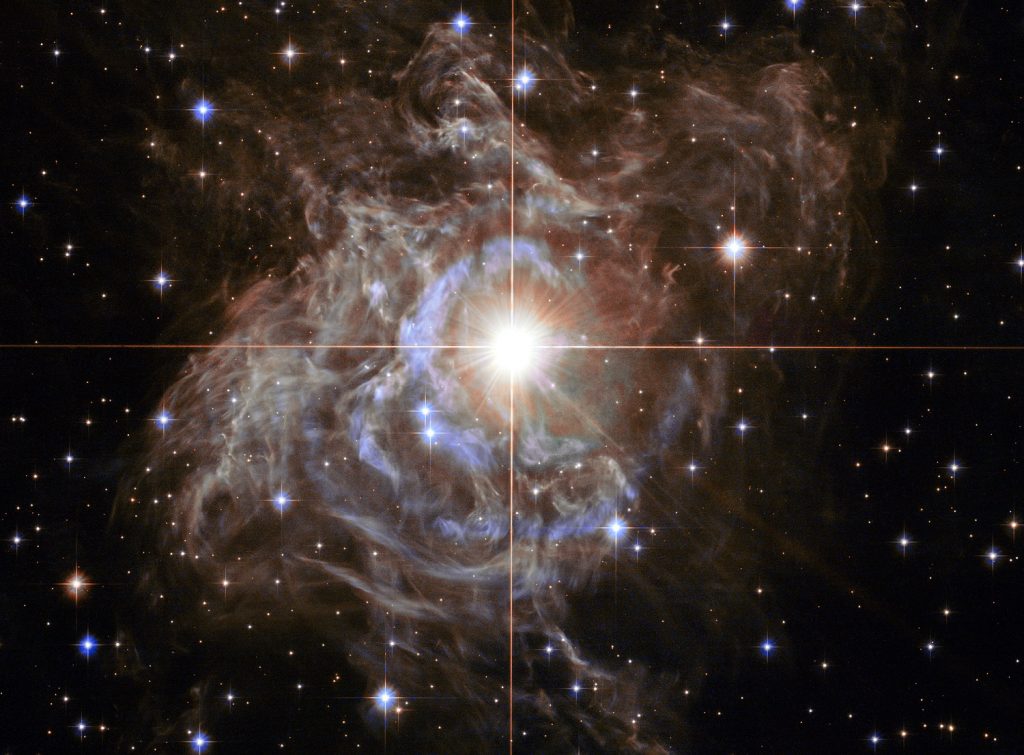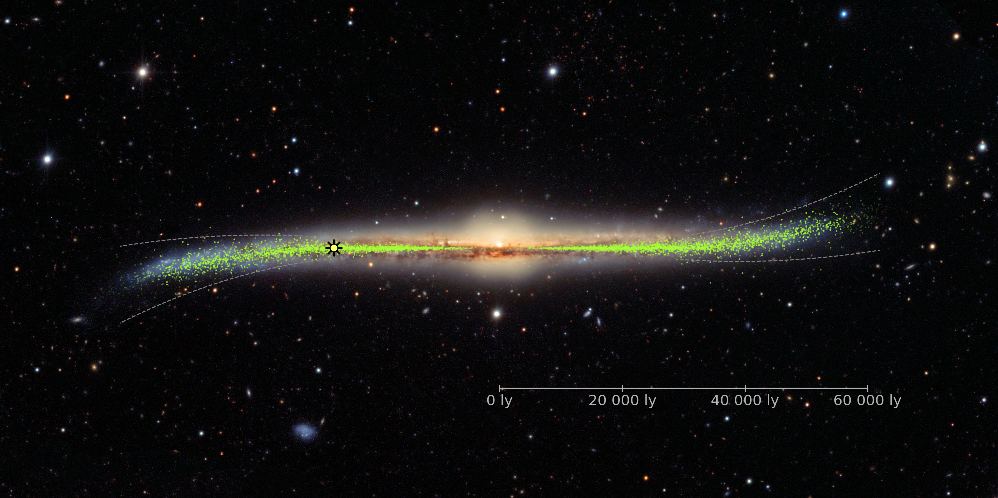In the 17th century, Galileo Galilee aimed his telescope at the stars and demonstrated (for the first time) that the Milky Way was not a nebulous band but a collection of distant stars. This led to the discovery that our Sun was merely one of the countless stars in a much larger structure: the Milky Way Galaxy. By the 18th century, William Herschel became the first astronomer to create a map that attempted to capture the shape of the Milky Way. Even after all that time and discovery, astronomers are still plagued by the problem of perspective.
While we have been able to characterize galaxies we see across the cosmos with relative ease, it is difficult for astronomers to study the size, shape, and population of the Milky Way because of how our Solar System is embedded in its disk. Luckily, there are methods to circumvent this problem of perspective, which have provided astronomers with clues to these questions. In a recent paper, a team from the Astronomical Observatory at the University of Warsaw (AstroUW) used a large collection of Mira variable stars to trace the shape of the Milky Way, which yielded some interesting results!
Patryk Iwanek, an astronomer with AstroUW, led the study team. The paper that describes their findings, titled “A three-dimensional map of the Milky Way using 66,000 Mira variable stars,” is being reviewed for publication by the Astrophysical Journal Supplement Series. For the sake of their study, the team examined data on 65,981 Mira-type stars observed by the Optical Gravitational Lensing Experiment (OGLE), a long-term sky survey of variable stars based at the University of Warsaw. Since 1992, OGLE has monitored the brightness of about two billion stars in the Milky Way and the Magellanic Clouds, providing insight into a wide range of astronomical phenomena.
The OGLE project, led by astronomy and astrophysics professor Andrzej Udalski (who is also the director of the AstroUW), is one of the largest-scale sky surveys worldwide. During its long history, the OGLE survey has contributed significantly to the study of a wide range of astronomical phenomena, including gravitational lensing and microlensing, extrasolar planets, variable stars, the cosmic distance scale, and the structure and evolution of the Milky Way and Magellanic Clouds.
As stars approach the end of their main sequence phase, they exhaust their supply of hydrogen fuel and begin consuming helium. This causes them to expand to several times the original size and to become dimmer and cooler than main sequence stars – hence the term Red Giants. Mira variables are a special class of pulsating red giants that have long periods ranging from 80 to more than 1000 days. They are part of the Asymptotic Giant Branch (AGB) of the Hertzsprung–Russell Diagram, which includes all stars with less than 5-8 solar masses.
The dramatic changes in brightness of pulsating stars (like other variable stars) make them very useful to astronomers for measuring distances and the spatial distribution of stars in galaxies. As Iwanek explained Universe Today via email:
“These stars follow a well-defined period-luminosity relation, which means that [by] knowing their pulsation periods, it is possible to calculate their absolute magnitudes and then determine their distances. This feature makes Miras an excellent cosmic distance indicator. Using their precisely measured distances, it is possible to study the three-dimensional distribution of stars in our galaxy.
“Moreover, the high luminosity of Miras, which is orders of magnitude greater than that of the Sun, makes it possible to observe these stars not only in the Milky Way but also in other nearby galaxies (e.g., M31 or the Magellanic Clouds). Studying the Mira variables may help to understand the structure and evolution of galaxies.”

For their study, the team used 65,981 stars mapped by OGLE that fall into the category of Mira variables. They also considered the distance uncertainties by implementing the Bayesian Hierarchical Method (BHM), a statistical model used for mapping non-linear phenomena where inferences are made about a population based on many individual observations arranged by levels. In this case, the distances of Mira variables are known with an uncertainty of about 10%, which constituted the second level of their Bayesian model.
From this, Iwanek and his colleagues were able to create a detailed 3D map of our galaxy composed of young and intermediate-age stellar populations. Their analysis, he said, provides independent evidence of an X-shaped bulge component and a flared disk:
“Based on the sample of 66,000 Mira variables, we measured and confirmed the angle of the Galactic bar (equal to ~20° to the Sun-Galactic center line-of-sight), But more importantly, we showed that a [X-shaped] structure in the center of the Galaxy exists. The X-shape is an additional structure in the dense, central part of the Milky Way, the Galactic bulge, formed by two overlapping groups of stars. This structure is thought to be caused by the movements and interactions of stars within the bulge. It could be a common feature of barred spiral galaxies (similar to our Milky Way).”
This study builds on previous work conducted by astronomers from the University of Warsaw, Ohio State University (OSU), and the University of Warwick (of which Iwanek was a co-author). For this study (released in 2019), Iwanek and his colleagues used data on Cepheid variable stars to create a 3D map of the Milky Way. This map revealed the structure of the Milky Way and allowed the team to constrain the warped nature of the Milky Way’s disk.

“Classical Cepheids and Mira variables are stars from different populations,” he said. “The former are young (approximately 100-200 million years old), while the latter are of intermediate age (between 3 and 9 billion years). This means that these stars form different structures in the Galaxy – the classical Cepheids are mainly observed in the spiral arms, while Miras are observed in the bulge and disk. In the latest research, we also used mid-infrared observations to precisely measure distances to the Mira stars, but this time we focused mainly on the Galactic center, where Miras predominate.”
The 3D map of the Milky Way from this latest study offers new clues about the structure of the Galactic Bulge, which could also help astronomers understand the structure of other barred spiral galaxies. As Iwanek emphasized, all 66,000 Miras variables were selected and classified from the OGLE survey “by hand.” In other words, the light curve of every star was examined by an experienced astronomer to determine if they were variable and what type they were. This, said Iwanek, presents opportunities for future surveys that rely on machine learning:
“Our huge collection of Mira variables, thanks to its purity and completeness, as well as the accurate and long-term OGLE light curves, can be used to train the machine learning algorithms for the automatic classification of variable stars in future sky surveys conducted with larger telescopes.”
Further Reading: arXiv

